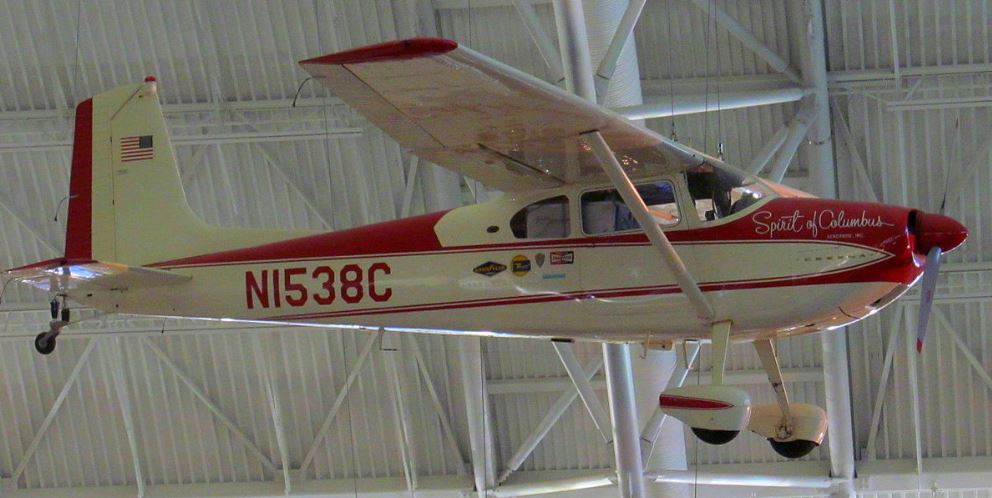The Cessna 180 is a four- or six-seat, fixed conventional gear general aviation airplane which was produced between 1953 and 1981. Though the design is no longer in production, many of these aircraft are still in use as personal aircraft and in utility roles such as bush flying. This one was build in 1955.
Cessna introduced the heavier and more powerful 180 as a complement to the Cessna 170. It eventually came to be known as the Skywagon. The prototype Cessna 180, N41697, first flew on May 26, 1952. Cessna engineering test pilot William D. Thompson was at the controls. The airframe of the 180 is all-metal, constructed of aluminum alloy. The fuselage is a semi-monocoque structure, with exterior skin sheets riveted to formers and longerons. The strut-braced wings, likewise, are constructed of exterior skin sheets riveted to spars and ribs. The landing gear of the 180 is in a conventional arrangement, with main gear legs made of spring steel, and a steerable tailwheel mounted on a hollow tapered steel tube. Cessna 180s produced between 1953 and 1963 have two side windows, while 1964 to 1981 models feature three side windows, as they use the same fuselage as the Cessna 185. 180s can be equipped with floats and skis.
Record flight

Jerrie Mock’s Cessna 180
The Cessna 180 gained recognition as the aircraft chosen by Geraldine Mock, the first woman pilot to successfully fly around the world. The flight was made in 1964 in her 1953 model, the Spirit of Columbus (N1538C), as chronicled in her book Three-Eight Charlie.[3] The Cessna factory obtained the aircraft and kept it at the Pawnee (Wichita, Kansas) manufacturing plant after the epic flight, suspended from the ceiling over one of the manufacturing lines. It is currently on display at the National Air and Space Museum.
OK-KAH
Four seat high wing light aircraft powered by a 230 hp (172 kW) Continental O-470-J engine, landplane gross weight 2,550 lb (1,157 kg) and was certified 1955.
General characteristics
Crew: one/two
Capacity: four passengers
Length: 25 ft 9 in (7.85 m)
Wingspan: 35 ft 10 in (10.92 m)
Height: 7 ft 9 in (2.36 m)
Wing area: 174 sq ft (16.2 m2)
Empty weight: 1,709 lb (775 kg)
Gross weight: 2,550 lb (1,270 kg)
Powerplant: 1 × Continental O-470-J , 230 hp (172 kW)
Propellers: 2-bladed constant speed, 6 ft 10 in (2.08 m) diameter
Performance
Maximum speed: 148 kn (170 mph, 274 km/h)
Cruise speed: 142 kn (163 mph, 263 km/h)
Stall speed: 48 kn (55 mph, 89 km/h)
Range: 890 nmi (1,020 mi, 1,650 km)
Service ceiling: 17,700 ft (5,400 m)
Rate of climb: 1,100 ft/min (5.6 m/s)
Source: wikipedia.org

